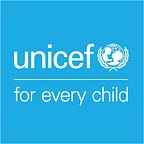Facing an uncertain future
November 2015: Worldwide, some 60 million people fled their homes due to conflict and insecurity in 2014, a number expected to rise sharply by the end of 2015 with the numbers of refugees and migrants reaching European shores now surpassing 792,000. Of them, an estimated 34% are children and women. As the crisis escalates, safeguarding families is a global priority.
Unprecedented numbers of refugees, primarily from the Syrian Arab Republic, Afghanistan and Iraq, are seeking safety in Europe. They face long and arduous journeys, and their needs are increasing. At a reception centre in Gevgelija, the former Yugoslav Republic of Macedonia.
Movement through the Western Balkans continues, with average daily arrivals estimated at 6,800 in the former Yugoslav Republic of Macedonia, is straining capacities at the local level. Refugees board a train in Gevgelija.
The effects on children are far-reaching. Besides perilous border crossings and treacherous terrain, children are at risk of illness, lack of proper nutrition and exhaustion. Children need a safe place to rest and play. A UNICEF-supported child-friendly space in Gevgelija.
In addition, at risk for trafficking and sexual exploitation, unaccompanied children are among the most vulnerable groups on the move and their ranks are growing. Access to psychosocial and child-protection services is essential. Adolescent boys at a reception centre near Gevgelija.
In their search for international protection, refugees and migrant families face an uncertain future. UNICEF is focusing on the most vulnerable: babies and young children, and those with disabilities and special needs. Refugee children on a train in Gevgelija, in transit to Serbia.
Tarik, 7, from the Syrian Arab Republic, hopes to make it to Germany with his family. Speaking of his journey he says he liked Greece.
“People were warm” he said. “They were hugging and holding me when we landed.”
Tarik queues for a care package in Tabanovce before crossing into Serbia.
Besides the physical discomforts facing refugees, the journey exerts an emotional toll. Mushawa, 15, kisses his brother Sajar, 1, goodbye in Tabanovce, close to the Serbian border. He hopes to go to France and become an architect. His parents had to remain behind in Afghanistan.
(Right) Lujayne, 10, from the Syrian Arab Republic, with her family in Tabanovce, en route to the Serbian town of Preševo.
“I hope that we make it safely to Germany and that the war would end … I would like to become an international doctor, curing all sorts of diseases,” she said.
The challenges of children are different from those faced by adults. Facing uncertain futures, they have left behind family members, school and friends, and are in desperate need of the lost comforts of home. In Preševo, at a reception centre for refugees and migrants.
Sharing in advance, information on refugee and migrant flows will help alleviate the suffering of refugee children by reducing registration times and facilitating support for families and vulnerable children. An overwhelmed reception centre in Preševo.
UNICEF, the United Nations refugee agency (UNHCR), and its partners are scaling up interventions in partnership with governments to provide better capacity for refugees caught between borders. An overwhelmed reception centre in Preševo.
The needs of mothers and young children are especially acute. Changing mats, antibacterial gel and diapers are needed, as well as assistance for lactating mothers. Rosa, 20, a Syrian refugee, changes her 10-month-old daughter, at a transit centre near the Serbian town of Šid.
Approximately 350,000 people have crossed into Serbia between January and November, with at least 4,000–5,000 people passing through the Serbian border town of Šid leading to Croatia every day. Distributing travel papers at a transit centre in Šid.
While many children have been dispossessed of their childhood, missing out on normal routines including their education, the hope for a better future remains as they and their families seek lives free of conflict and insecurity.
Still, many of those on the move long for home.
Passing through a transit centre in Šid, Shaimae Drazeni, 15, says: “My hope is [to] go back to Syria … that things will go back to normal; that the joy will find its way back to our family.”
View Shaimae’s video.
View the photo essay In Greece, a sea of arrivals.
View the photo essay In search of hope.
Learn more about the refugee and migrant crisis in Europe.
